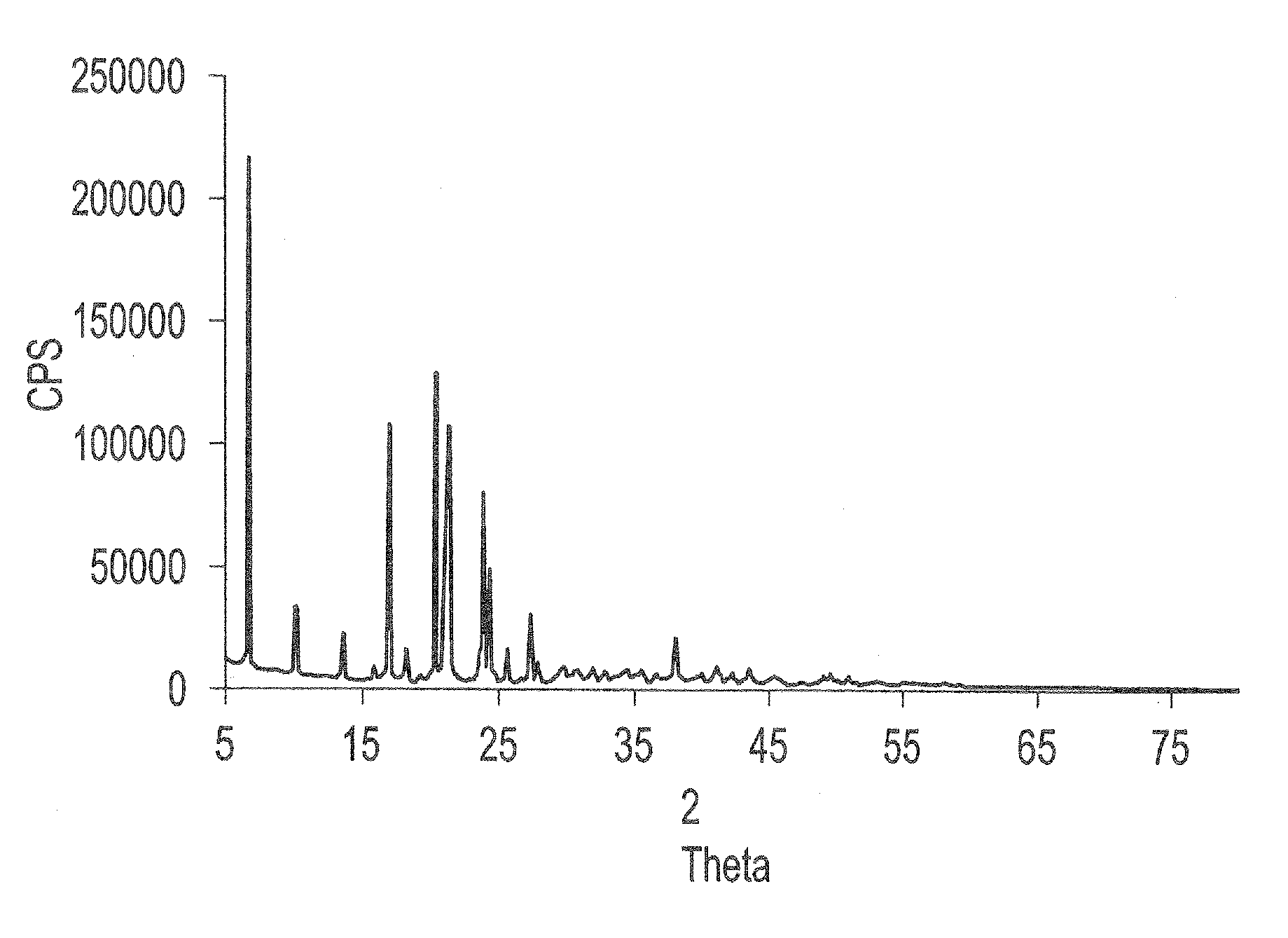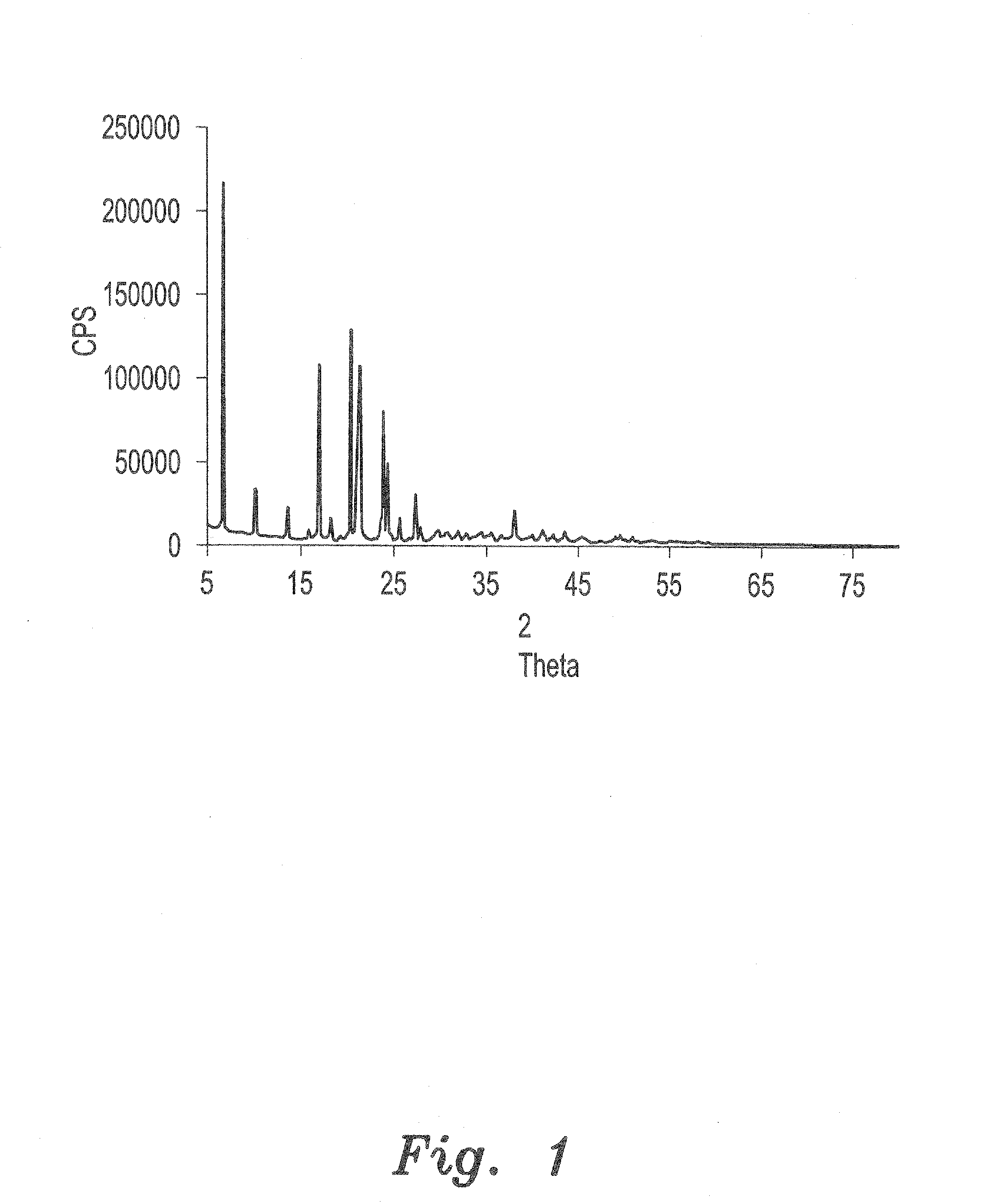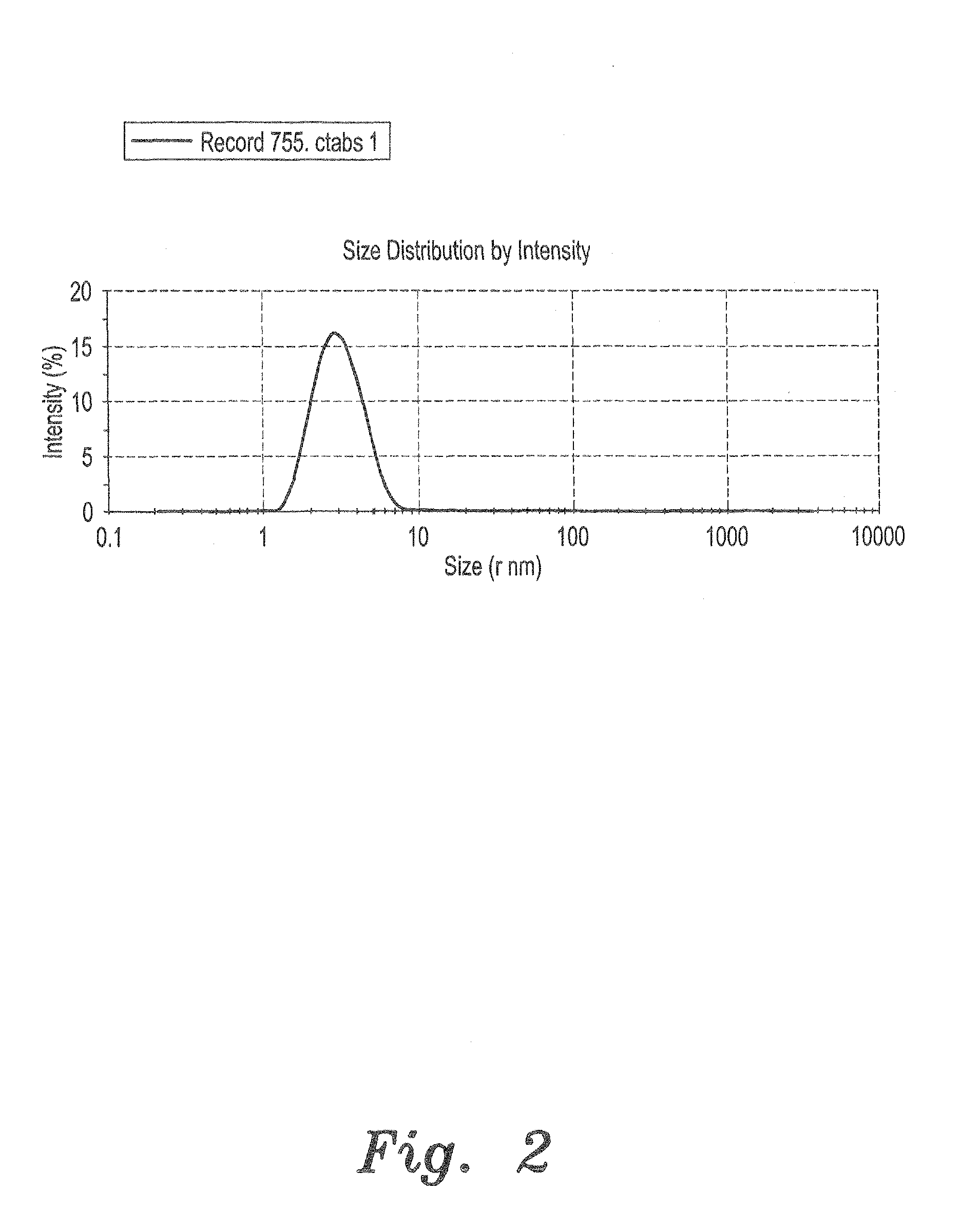Method of synthesizing nanoparticles and a nanoparticle-polymer composite using a plant extract
a technology of nanoparticles and polymers, which is applied in the field of synthesis of nanoparticles and nanoparticlepolymer composites using plant extracts, can solve the problems of difficult to achieve and limited widespread application
- Summary
- Abstract
- Description
- Claims
- Application Information
AI Technical Summary
Benefits of technology
Problems solved by technology
Method used
Image
Examples
example 1
Green Synthesis of Silver Nanoparticles
[0034]About 200 mg of orange peel was crushed. The crushed orange peel was added to 20 ml of toluene in a flask, stirring vigorously for 10 minutes at 60° C. The toluene orange peel extract obtained was then centrifuged for 5 minutes at 7000 rpm at room temperature. Next, 1 mmole / ml silver nitrate (AgNO3) was dissolved in 20 ml of toluene under vigorous stirring at 700° C. for 5 minutes. About 5 ml of orange peel extract was added to the solution of silver nitrate resulting in a color change. A brown solution was obtained, indicating reduction of Ag ions and the formation of silver nanoparticles. FIG. 3 shows a graph of the average particle size of the synthesized silver nanoparticles measured using a Zeta sizer. FIG. 7 shows the TEM image of green silver nanoparticles (AgNPs) and green silver nanoparticles / Polystyrene (AgNPs / PS) nanocomposite film. FIG. 9 shows the TEM image of green synthesis of silver nanoparticles using orange peel and tolu...
example 2
Green Synthesis of Silver Nanoparticles
[0035]300 mg of Orange peel was washed and cut into small pieces, boiled with 50 ml of distilled water for 3 minutes then filtered or centrifuged for about five minutes at about 7000 rpm at room temperature. Green silver nanoparticles were synthesized by adding 7 ml aqueous solution of orange peel extract to the aqueous solution of 2.0×10−3 mole / L silver nitrate (AgNO3) and 5.0×10−4 mole / L (CTAB) cetyltrimethylammonium bromide under vigorous stirring at temperature 40° C. for 13 minutes at room temperature. The solution is free of color at this point. When adding the organic peel extract, the color changed from colorless to brown color. The color change indicated the formation of the respective bio nanosilver, which was then dried by air to produce bio-nanosilver crystal powder. FIG. 1 shows a graph of X-ray powder diffraction (XRD) spectrum of the synthesized silver nanoparticles in solid state. FIG. 2 shows a graph of the average particle siz...
example 3
Green Synthesis of Titania Nanoparticles
[0036]About 300 mg of orange peel was washed and cut into small pieces and boiled with 50 ml) distilled water for 3 min then filtered or centrifuged for about five minutes at about 7000 rpm at room temperature. About 15 g of Acacia Nilotica herbal medical plant husk was soaked in 200 ml of distilled water overnight, filtered and then the aqueous extract was set aside until further use. The aqueous extract and titanium (IV) isopropoxide were mixed together at a molar ratio of 2:1 under vigorous stirring at temperature 30° C. for 10 minutes. The solution was transferred into a Teflon autoclave and / or oven at 300° C. for 7 hours yielding TiO2 nanoparticles brownish powder (with Acacia Nilotica herbal medical plant extract and light yellow powder with orange peel extract), which was isolated by conventional filtration methods. FIG. 6 presents a graph of the average size distribution by intensity of green titanium dioxide (TiO2) nanoparticles prepa...
PUM
| Property | Measurement | Unit |
|---|---|---|
| Temperature | aaaaa | aaaaa |
| Temperature | aaaaa | aaaaa |
| Diameter | aaaaa | aaaaa |
Abstract
Description
Claims
Application Information
 Login to View More
Login to View More - R&D
- Intellectual Property
- Life Sciences
- Materials
- Tech Scout
- Unparalleled Data Quality
- Higher Quality Content
- 60% Fewer Hallucinations
Browse by: Latest US Patents, China's latest patents, Technical Efficacy Thesaurus, Application Domain, Technology Topic, Popular Technical Reports.
© 2025 PatSnap. All rights reserved.Legal|Privacy policy|Modern Slavery Act Transparency Statement|Sitemap|About US| Contact US: help@patsnap.com



